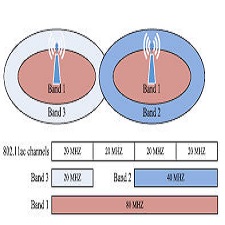توضیحات
ABSTRACT
We examine the impact of bank credits on non-oil tradable sector output using aggregate data from Azerbaijan. We apply ARDL Bounds Testing approach, Engle–Granger two-step methodology, and Johansen’s approach while correcting for small sample bias to test for cointegration and construct error correction models. Results from all three approaches are similar indicating that bank credits have a positive impact on non-oil tradable sectors output both in the long- and short-run. Short-run deviations are corrected to the long-run equilibrium within one quarter. Our results are useful for the macroeconomic policy makers and contribute to the literature that studies the relationship between the financial sector development and economic growth in the resource driven small open transition economies.
INTRODUCTION
Financial development is considered one of the most vital sources of economic growth (Beck, 2009; Levine, 2005 provide excellent overviews). Prior literature suggests that financial sector influences economic growth by two channels: improved resource allocation and acceleration of technological development (Beck, Levine, & Loayza, 2000; Schumpeter, 1911; Wurgler, 2000). These effects originate from the financial institutions’ role of intermediation that mobilizes savings for investment purposes, facilitates a low-cost transfer of external funds, and provides efficient allocation of capital. Previous theoretical and empirical studies use different indicators, including the level of bank credit, interest margin, and productivity in financial sector to identify the effects of bank intermediation and financial development on economic growth. Greenwood and Jovanovic (1990) develop a theoretical model to find that the impact of financial intermediation on economic growth is dependent on the transitional cycles in the economy. Austrian-based credit cycle theories (Hayek, 1933, 1935; von Mises, 1912) and capital-based macroeconomics (Cochran, Call, & Glahe, 1999; Garrison, 2001) generally argue that financial intermediation and credit expansion, especially through money creation may cause overinvestment problems that lead tounsustainable economic growth. The economic growth, especially in small open economies may experience larger fluctuations according to the credit boom explanation of the business cycle (White, 2006). Thus, the relation between financial developmentand economic growth in small open economies is a non-trivial question and yet to be empirically investigated.
چکیده
ما تأثیر اعتبارات بانکی را در خروجی بخش غیر قابل استفاده در بخش نفت با استفاده از داده های جمع آوری شده از آذربایجان بررسی می کنیم. ما رویکرد تست روابط ARDL، روش دو مرحله ای Engle-Granger و رویکرد یوهانسن را در حالیکه برای تعصب نمونه کوچک استفاده می کنیم برای تست هم انداختن و مدل اصلاح خطاها ساخت می کنیم. نتایج از هر سه رویکرد مشابه هستند که نشان می دهد که اعتبارات بانکی تأثیر مثبت بر بخش های غیر قابل انتقال نفت در هر دو دوره بلند مدت و کوتاه مدت دارد. انحراف کوتاه مدت در یک چهارم به تعادل بلندمدت اصلاح می شود. نتایج ما برای سیاست گذاران اقتصاد کلان مفید است و به ادبیات کمک می کند که رابطه بین توسعه بخش مالی و رشد اقتصادی را در اقتصادهای پر سر و صدای باز بهینه منابع بررسی می کند.
مقدمه
توسعه مالی یکی از حیاتی ترین منابع رشد اقتصادی محسوب می شود (Beck، 2009؛ Levine، 2005). ادبیات پیشین نشان می دهد که بخش مالی بر رشد اقتصادی با دو کانال تأثیر می گذارد: تخصیص منابع بهبود یافته و سرعت بخشیدن به توسعه تکنولوژیک (Beck، Levine، & Loayza، 2000؛ Schumpeter، 1911؛ Wurgler، 2000). این اثرات ناشی از نقش نهادهای مالی میانجیگری است که باعث صرفه جویی در اهداف سرمایه گذاری می شود، انتقال هزینه های کم هزینه از منابع خارجی را تسهیل می کند و تخصیص موثر سرمایه را فراهم می آورد. مطالعات نظری و تجربی پیشین از شاخص های مختلف از جمله میزان اعتبار بانکی، حاشیه سود و بهره وری در بخش مالی استفاده می کند تا تأثیر واسطه بانکی و توسعه مالی را بر رشد اقتصادی مشخص کند. گرینوود و یووواوویچ (1990) یک مدل نظری را ایجاد کرده اند تا ببینند که تأثیر واسطه مالی بر رشد اقتصادی وابسته به دوره های انتقالی در اقتصاد است. نظریه های کلیدی اعتباری اتریشی (هاکی، 1933، 1935؛ فون میسس، 1912) و اقتصاد کلان مبتنی بر سرمایه (Cochran، Call & Glahe، 1999؛ Garrison، 2001) به طور کلی استدلال می کنند که واسطه مالی و گسترش اعتبار، به ویژه از طریق ایجاد پول ممکن است مشکلات سرمایه گذاری بیش از حد سرمایه گذاری شود که منجر به رشد اقتصادی نامطمئن می شود. رشد اقتصادی، به ویژه در اقتصادهای کوچک باز ممکن است با توجه به توضیح رونق اعتبار از چرخه کسب و کار، نوسانات بیشتری را تجربه کند (White، 2006). بنابراين رابطه بين توسعه مالي و رشد اقتصادي در اقتصادهاي باز کوچک، يک سوال بي اهميت است و هنوز تجربي تجربي است.
Year: 2013
Publisher : ELSEVIER
By : Fakhri Hasanov , Fariz Huseynov
File Information: Persian Language/ 14 Page / size: 491 KB
Only site members can download free of charge after registering and adding to the cart
سال : 1392
ناشر : ELSEVIER
کاری از : فخری حسنف، فرازی حسینوف
اطلاعات فایل : زبان فارسی / 14 صفحه / حجم : KB 491


![Bank credits and non-oil economic growth Evidence from Azerbaijan[taliem.ir]](https://taliem.ir/wp-content/uploads/Bank-credits-and-non-oil-economic-growth-Evidence-from-Azerbaijantaliem.ir_.jpg)





![Word of Mouth impact on the adoption of mobile banking[taliem.ir]](https://taliem.ir/wp-content/uploads/Word-of-Mouth-impact-on-the-adoption-of-mobile-bankingtaliem.ir_-150x150.jpg)
![A theoretical model of bank lending does[taliem.ir]](https://taliem.ir/wp-content/uploads/A-theoretical-model-of-bank-lending-doestaliem.ir_-150x150.jpg)
نقد و بررسیها
هنوز بررسیای ثبت نشده است.